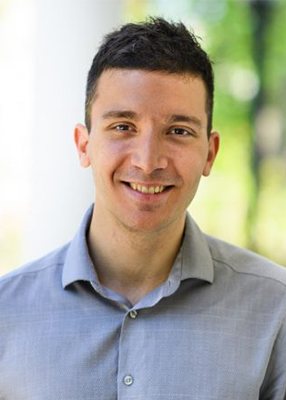Georgios Makris
Research Area
Education
PhD (The University of Birmingham)
About
Georgios (Yorgos) Makris specializes in Byzantine art and archaeology, placing particular emphasis on the material culture and landscape of monasticism as well as the dissemination and usage of portable objects across the medieval eastern Mediterranean.
Makris is currently at work on his first monograph that examines the sacred topography, artistic production, and life-cycle of monasticism in the European hinterland of the Byzantine capital, Constantinople, within its Balkan and Mediterranean context. The book is primarily concerned with fundamental aspects of medieval monastic culture, ranging from material issues such as design and interior decoration of monastic spaces, to broader subjects relating to the interaction between architecture and landscape, daily routine, and the social dynamics of patronage from the eleventh to fifteenth centuries.
His work lies at the intersection of art history, archaeology, and cultural history. As an active archaeologist, he has participated in a number of archaeological projects and is currently co-director of the field survey of the Molyvoti, Thrace, Archaeological Project (MTAP). The surface survey integrates a trading port in northeastern Greece and its periphery into the wider region and explores the site’s changing geopolitical and economic connections with surrounding cultural loci across time.
Makris is also engaged in a third research project which investigates the collective significance and role of jewelry and personal dress accessories in the daily lives of the Byzantines. The project brings together museum artifacts with a number of jewels found in medieval cemeteries.
His scholarship has received support from a number of institutions, including Dumbarton Oaks Research Library and Collection (Junior Fellow 2014-2015) and Koç University’s Research Center for Anatolian Civilizations (Fellow 2015-2016). He has held postdoctoral appointments at Columbia University’s Department of Art History and Archaeology, and Princeton University’s Seeger Center for Hellenic Studies. Prior to joining AHVA, he was Andrew W. Mellon Fellow in Art History at the Metropolitan Museum of Art. At UBC, Makris teaches courses on late antique and medieval art, Byzantine art, and more intensive courses, including on the art of the early medieval period, and on cross-cultural interactions in the medieval Mediterranean.
Teaching
Research
Byzantine and Western medieval art and archaeology, monastic spaces, archaeological survey, humans-environment interactions, medieval jewellery
Publications
“Living in Turbulent Times: Monastic Communities and Lay Society in Late Byzantine Southwest Thrace,” Dumbarton Oaks Papers 74 (2020): 161—83.
“Lay Authority and Meaningful Portraiture on Mount Papikion, Thrace,” Gesta 58, no. 1 (Spring 2019): 55-75.
“Remnants of an Era: Monasteries and Lay Piety in Late Byzantine Sozopolis,” in Late Byzantium Reconsidered: The Arts of the Palaiologan Era in the Mediterranean, eds. M. A. Rossi and A. Mattiello (Routledge, 2019), 118-131.
“Entering the Monastic Cell in the Byzantine World: Archaeology and Texts,’’ in Aegis: Essays in Mediterranean Archaeology Presented to Matti Egon-Xylas, eds. Z. Theodoropoulou-Polychroniadis and D. Evelyn (Archaeopress, 2015), 191-201.
